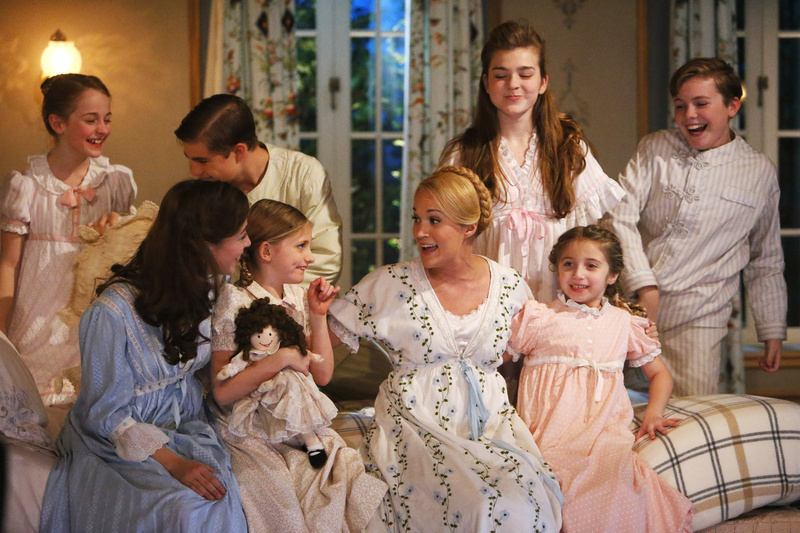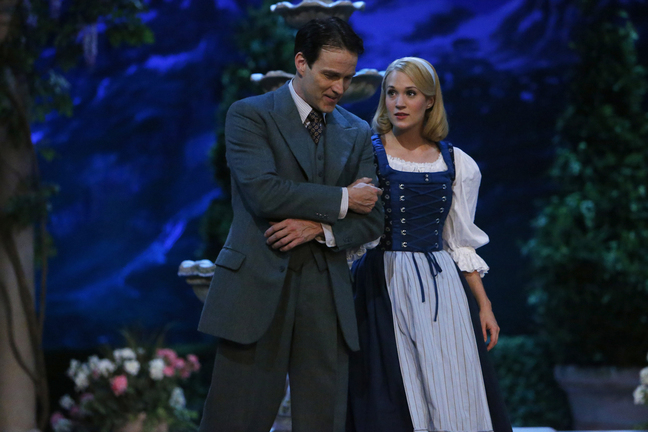America infrequently gathers around the tube anymore (except, of course, for football games), but you could sense millions drawing near Thursday night for a skeptical look at NBC’s “The Sound of Music Live,” an ambitious – yet disappointingly stiff – staging of the original musical.
I say “disappointing,” but I don’t mean travesty. Despite some strange lighting choices reminiscent of old soap operas that turned everything either a shade of scented candle or backyard compost and a weird sonic hiss that only amplified awkward gaps in spoken dialogue, much of it worked out OK. Kudos to NBC for trying something new (which is, in fact, something old).
Some viewers hoped it would be worse because that would have been more fun to mock on Twitter. “The Sound of Music” (which for nearly everyone means the vivid and endlessly ebullient 1965 Robert Wise film, starring Julie Andrews and Christopher Plummer) occupies a cultural space that is both reverential and camp.
The live broadcast was, therefore, received partly as a drinking game, partly as a moment of mass simultaneous theater criticism. In return, it only offered a very small part of un-ironic joy. It’s possible that a perfect balance of all those things exists, but “Sound of Music Live” never had a chance of climbing that mountain.
Personally, I hadn’t been this nervous about the potential for a live-TV disaster since Nik Wallenda prayed with Joel Osteen and then tightroped across a Grand Canyon gorge this past June. Taking on the essentially sacrosanct Rodgers and Hammerstein musical about a singing family of Austrian elites who find the Anschluss not quite to their liking – it just seems like a sure and senseless (to say nothing of humiliating) way to plunge to one’s death.
But Wallenda lived, and so did this ersatz von Trapp family, led by country-pop singer Carrie Underwood as Maria, the young governess who breezes in and changes their lives with song and helps them escape the Third Reich.
They didn’t all get away clean: You can salute Underwood’s strong vocals and her bravery in stepping into the role, but it’s impossible not to notice that she can’t act. When Underwood spoke her lines, she was as flat as the label on a Swiss Miss package of cocoa.
But she wasn’t alone – others who ostensibly have more acting experience, especially “True Blood’s” Stephen Moyer in the role of Captain von Trapp, struggled with a format that is all but alien to today’s TV. Even stage veterans – like Laura Benanti, as Frau Schrader, and Christian Borle as “Uncle” Max Detweiler – gave the production a sense of professionalism but not shine. It was stage show with no audience to play off of; it was a movie with no sense of scope. Filmed live in a vast studio space in Long Island, it may as well have been beamed in from Saturn.
Only the fantastic Audra McDonald, as Mother Abbess, left a lasting impression. Michael Campayno, as Rolf the telegram-boy-turned-youth-Nazi, seemed naturally comfortable with the stage/TV hybrid. And, of course, you can always find strong-lunged children to play the von Trapp brood, and they always look great parading around in uniforms and drapery-hosen. They bid adieu to yeu-and-yeu, and yeu immediately forget about them.
The cast and producers were trying their best and still just working against too many fixed ideas about what “The Sound of Music” is and isn’t. Aside from “Star Wars,” “The Wizard of Oz” and a few other classics, there is no material better known than “The Sound of Music” movie, and no material is more dauntingly personal to fans.
Whether in a community theater or on live network TV, it’s hard to overcome the insecurity involved with staging the true-blue, original “Sound of Music.” All through “The Sound of Music Live,” I kept hearing echoes of high school drama teachers screaming, “For the last time, we are not doing the ‘bleeping’ movie version!”
NBC cautioned viewers similarly ahead of time; the stage version of “The Sound of Music,” which premiered in 1959, differs in significant ways from the movie. If viewers weren’t ready for that, the awkwardness and weak acting just made it all too much to bear. (And if that didn’t chase you off, what was Walmart trying to force-feed viewers with those sweetsy commercials that featured a – real, I guess? – Kansas family with 12 children?)
If you stuck with it, “The Sound of Music Live” improved as it slowly ambled toward the romance between Maria and Captain von Trapp and the family’s flight to freedom.
But I get the sneaking suspicion that the intended audience – children – peeled off fairly early in the night. Maybe they sneaked down to watch “The Sound of Music” DVD on the basement TV, safely and forever locked in a mid-’60s ideal of a late-’50s musical about a late-’30s bunch of people. What I liked about “The Sound of Music Live” was that, for a moment anyhow, it made me forget that it’s 2013.
Then, of course, I couldn’t resist the Twitter feed, with its hoots and hollers. While “The Sound of Music Live” tried to climb ev’ry mountain, most of us wound up in the valley, where we probably belong.
Send questions/comments to the editors.




Success. Please wait for the page to reload. If the page does not reload within 5 seconds, please refresh the page.
Enter your email and password to access comments.
Hi, to comment on stories you must . This profile is in addition to your subscription and website login.
Already have a commenting profile? .
Invalid username/password.
Please check your email to confirm and complete your registration.
Only subscribers are eligible to post comments. Please subscribe or login first for digital access. Here’s why.
Use the form below to reset your password. When you've submitted your account email, we will send an email with a reset code.